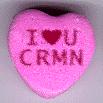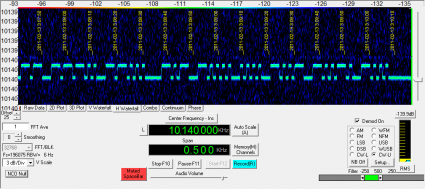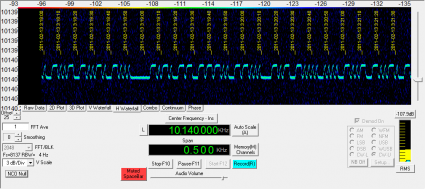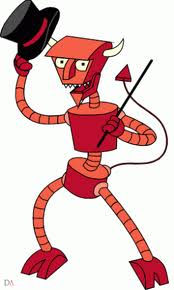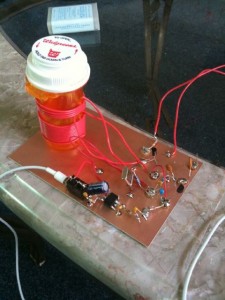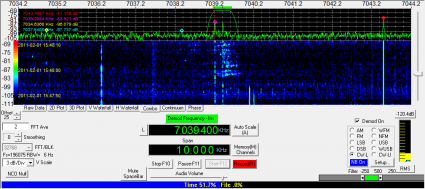Over at G4ILO’s blog, he responded to the recent Wired article about ham radio by asking “Is technology good for ham radio?” with his answer being “no”.
G4ILO’s Blog: Is technology good for ham radio?
The statement which caused me to blow milk out my nose was this one:
The more high-tech ham radio becomes, the less magic there is.
I must admit that such statements cause me to roll my eyes. Ham radio wasn’t ever magic. It seemed like magic, because it allowed you to do something which you couldn’t imagine doing without it: communicate with others over hundreds or thousands of miles. It’s hard not to think of this as magic, a quote attributed to Einstein (but as far as I know unverified) goes:
“The wireless telegraph is not difficult to understand. The ordinary telegraph is like a very long cat. You pull the tail in New York, and it meows in Los Angeles. The wireless is exactly the same, only without the cat.”
That makes it sound very much like magic, but it’s really not, and moreover, it never has been. On my desk I have a copy of The Principles Underlying Radio Communication, a really nifty little book put out by the U.S. Army Signal Corp. The first edition was published in 1918, and you can read it online via Google Books (my own copy is dated 1921).
If you bother to read this book, it isn’t magic or alchemy: it’s engineering and science, harnessed in the service of human communication. You’ll learn about currents and resistance, about Ohm’s law and batteries, about capacitance, magnetism and inductance. And because this was in the days just after WWI, you’ll see the use of alternators to generate radio waves, and the first hints of the use of vacuum tubes (the most cutting edge of technologies for its time). Amateurs were following right along through all this. If you surf the QST archive available from the ARRL, you can see that dedicated amateurs were tracking these amazing developments with incredible rapidity and skill. The history of amateur radio is one of technological adoption, not historical preservation. It was about challenging one’s self to do something that seemed like it would be beyond the realm of what could be done by individuals, working on their own with resources limited by what they could afford.
To me, amateur radio is about setting personal challenges, and then working to achieve them. I’ve called it “going boldly where others have gone before”, and if that seems odd to you, consider that you might want to see the Louvre, or Westminster Abbey, or Chitzen Itza with your own eyes even though you could just buy books and read about them. It’s about learning and growing and sharing with people of similar interests, and I see technology as only enabling more of that.
G4ILO maintains a webpage and a blog. If you surf over to his page, you can see a picture of his shack, which has at least nine radios which contain microprocessors. (In fact, I don’t see a single one which doesn’t.) I suspect you’ll find a couple more microprocessors in the visible power supplies and tuners. If technology is bad for amateur radio, I wonder why Julian seems to possess so much of it? If technology is such an anathema, a threat to the magic of amateur radio, then shouldn’t we all just go back to alternators, audions and spark gaps?
Technologies like cell phones and the Internet are incredible tools to bring the world closer together, and to allow us to communicate and share our part of the human experience. When we talk in hushed tones about the good old days when amateur radio was king, we just look foolish.
I do agree with Julian about a few things: I’m not a fan of D-Star, not because it uses the Internet (the Internet significantly extends its utility for hams) but because it relies on a patented technology which must remain forever (well, until the patent runs out) beyond the realm of experimentation and deployment. But the problem isn’t one of technology: it’s one of ownership. I also think that the ARRL (which does do a great many good things) doesn’t serve amateur radios best interest by promoting it mostly as an emergency radio service. As other communication technologies become more pervasive, it seems clear that amateur radio’s role is shrinking over time, and even if we were to reverse that trend, we’d basically be simply duplicated a radio network that could be provided by the government or by private industry.
Technology can be scary, but it also can be exciting and empowering. Let’s embrace technology, rather than drag our heels and complain that we can’t understand it. Let’s rise to the challenges that we have inside us to learn, to experiment and to embrace.
